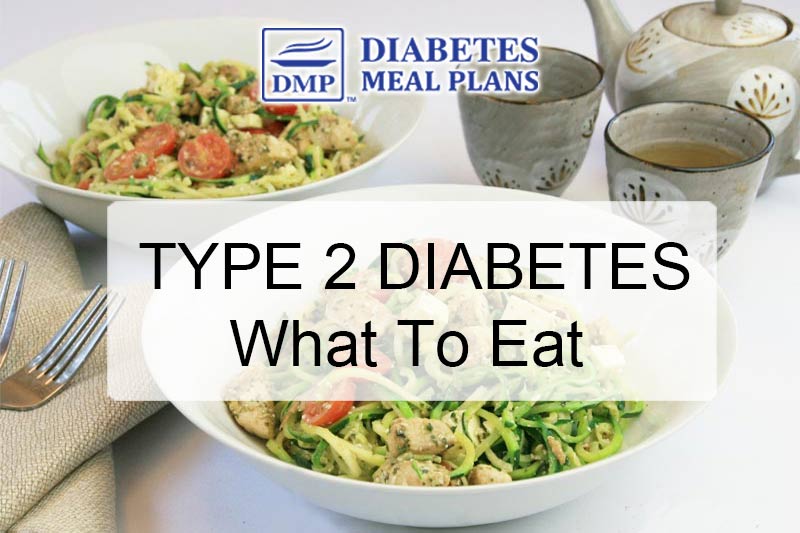While there are conflicting guidelines out there, we encourage a low carb diet because it has the most evidence for achieving better blood glucose control and health. Â
If you think that eating low carb means forcing down bland, lifeless meals for the rest of your life then think again (and rejoice!) because eating low carb can be colourful, creative, and down-right tasty!

What to Eat on a Low Carb Diet
As the name suggests, a low carb diet cuts down on one of the three major macronutrients â carbs! When thinking about that, you may feel like thereâs nothing left to eat, but that couldnât be further from the truth.
Fats, proteins, and low carb vegetables and fruits can be mixed and matched so many ways and incorporated into so many different recipes and meals.
Here are some of the healthy, low carb foods you should load up onâ¦
Fats
You can enjoy a mix of both plant and animal-based fats.
Anti-inflammatory fats that are great for the heart (and the soul) include:
- Olive oil and whole olives
- Nuts and unsweetened nut butters (sunflower butter, peanut butter, almond butter)
- Seeds (chia, flax, sunflower, pumpkin)
- Avocados and avocado oil
- Fish and fish oils
Other flavourful fats for your enjoyment are cocoa butter, full fat dairy like butter and unsweetened yoghurt, and coconut oil.
In addition to that list, remember that other seafood, chicken, meat, and eggs are all great sources of fat you can enjoy.
Proteins
Many high-fat sources are also good sources of protein, including:Â
- Meat: pork, poultry, lamb, game meats, organ meats
- Dairy: eggs and cheese (cheddar, ricotta, feta, cottage)
- Nuts and nut butters: peanut butter, almonds, walnuts, hazelnuts
- Dairy-based protein powder: whey and casein
- Vegetarian: tempeh, tofu, edamame, and sprouted beans and legumes (in small amounts)
Low Carb Vegetables & Fruits
To keep things balanced, youâll want to pair your proteins and fats with a heaping stack of non-starchy, fibre-rich veggies. If you can, get 5-10 serves of these veggies every day and your body will love you for it! One serve of veggies is 1/2 cup of most things or 1 cup when it comes to leafy veg.
When you look at your lunch or dinner plate, veggies should make up about half of the plate.
Hereâs a big list of âall you can eatâ low carb veg to get your started:
- Alfalfa, artichoke, asparagus, avocado, bean sprouts, beet greens, bok choy, broccoli, Brussels sprouts, cabbage, capsicum, cauliflower, celery, chicory, chives, choy sum, collard greens, cucumber, dandelion greens, daikon, eggplant (aubergine), endive, fennel, green beans, green onions, mushrooms, mustard greens, kale, kohlrabi, leeks, lettuce, okra, pak choi, radish, radicchio, rocket, rhubarb, spring onions, seaweeds, silverbeet, shallot, spinach, snow peas, Swiss chard, tomatoes, turnip greens, watercress, yellow summer squash, zucchini (courgette).
Moderate carbohydrate veggies can be enjoyed as well, just be sure to keep serving sizes a bit more moderate so you donât go overboard with carbs:
- Carrots, pumpkin, onions, winter squash, beets, turnip, green peas, and rutabagaÂ
For low carb fruits, stick to these tried and true staples:
- Berries: Blueberries, blackberries, strawberries, raspberries, and raw cranberries (1/4 to 1/2 cup portions)
- Citrus: lemons, limes, and grapefruit (stick to 1/2 grapefruit per serve)
- Stone fruit: cherries, apricots, and plums (in small portions)
Be Creative in the Kitchen
FlavoursÂ
If youâre a bit of a foodie, you might worry about having to suffer through boring meals when you donât have carbs to lean on. But the king of flavour isnât actually carbs/sugar, itâs fat!Â
Use generous amounts of olive oil, a bit of butter, mayonnaise, Greek yoghurt and egg yolks to add flavour and texture to your meals.
You can also bring in different flavours through natural spices, herbs, and seasonings. Use curry spices, mustard, vinegar, chilli, garlic, cinnamon, thyme, clove, pepper and other carb-free ingredients to bring new life to an old dish.
Substitutions
When it comes to eating low carb, substitutes make the world go round! Swap white or brown rice forcauliflower âriceâ,wheat noodles for konjac noodles, orwhite sugar for stevia.
Simple swaps like these make it easy for you to incorperate your new low carb habits with old favourite recipes. Most of your favourite breakfast, lunch, dinner, and dessert recipes can be altered to fit a low carb diet, and theyâll taste just as great.
Try out different kinds of sugar substitutes and see what works for you. There are many to choose from, like stevia, erythritol, xylitol, manitol, monk fruit, and others. Use them to sweeten up your morning coffee, a homemade salad dressing or a chocolate-y dessert.
Instead of wheat flour, use these low carb flours when cooking and baking:
- Almond flour/almond meal
- Flax seed meal
- Coconut flour
- Sesame flour
Focus on Real Food
One of the biggest take-aways is to focus on eating real foods.
By real foods we meal âwhole foodsâ that are less processed. Choose a handful of nuts over a sugary granola bar, choose freshly roasted chicken over chicken nuggets, choose a salmon fillet over frozen fish sticks.
Whole foods are the best kind of fuel, they contain the most nutrients, and theyâre easiest to digest.
Of course there are some packaged foods that are suitable low carb foods. But the point is, when you stay away from highly processed foods you automatically cut out all of the extra sugars, food dyes, artificial flavourings, and additives that you should be avoiding anyway.
For you, that means better metabolism and overall health!

